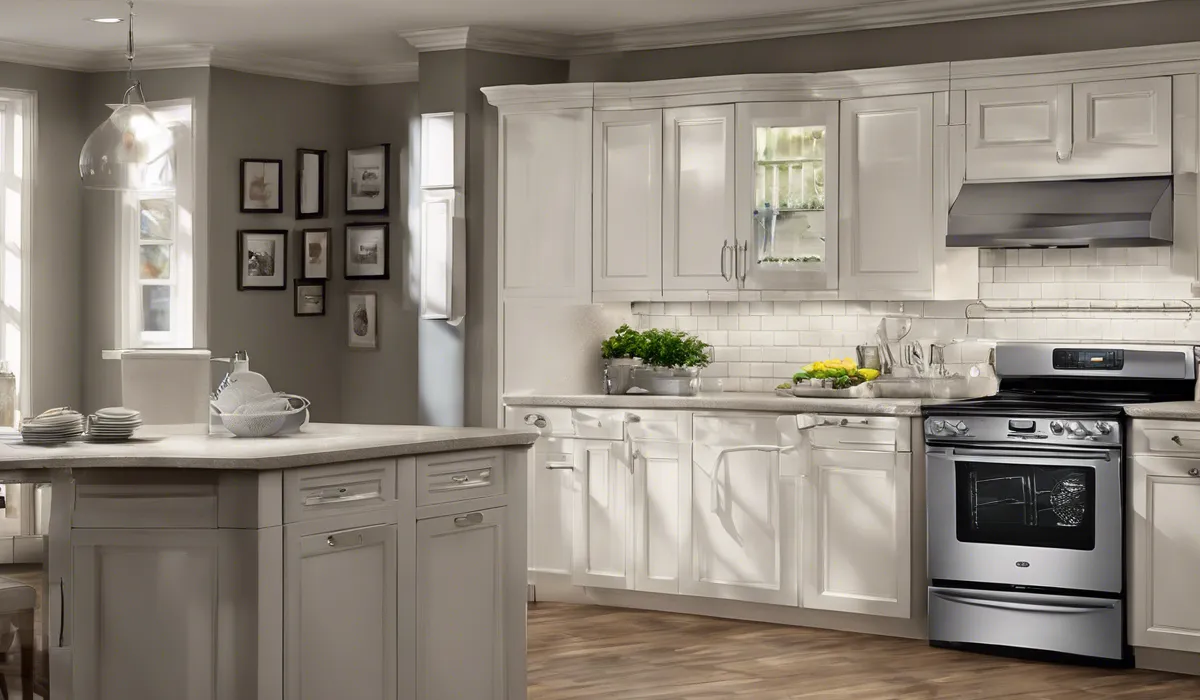How are Dishwashers Installed: A Step-by-Step Guide
Dishwashers are installed by connecting water supply and drain lines, attaching the power source, and securing the unit under the countertop. Ensure the dishwasher is level, then anchor it to prevent movement.
Preparing for Dishwasher Installation

Choosing the Right Dishwasher
When preparing to install a new dishwasher, the first step is selecting the right model for your needs.
Consider the size of your household, your dishwashing habits, and the features that are important to you.
Energy efficiency is also key for saving on utility bills. Ensure that the dishwasher you choose fits the designated space in your kitchen and matches your home’s decor.
Tools and Materials Needed
Before you start, gather all the tools and materials you will need for the installation. This includes a screwdriver, adjustable wrench, level, tape measure, utility knife, and Teflon tape.
Additionally, you may require hoses, clamps, and electrical supplies depending on your specific dishwasher model.
Measuring the Space
Measuring the space accurately is crucial for a smooth installation. Use a tape measure to check the width, depth, and height of the opening where the dishwasher will go.
There should be a small gap around the dishwasher to prevent noise transmission and allow for easy removal in the future.
Checking Plumbing and Power Accessibility
Make sure that your kitchen has the necessary plumbing and power hookups for dishwasher installation.
The water supply valve should be easily accessible, and there should be a power outlet or electrical wiring nearby. If you are unsure, consult a professional before proceeding.
Removing the Old Dishwasher (If Applicable)
If you are replacing an old dishwasher, you must first remove it carefully. Turn off the power and water supply before disconnecting the hoses and wiring. Slowly slide out the old dishwasher and clean the area to prepare for the new installation.
The Installation Process

Turning Off Water and Power
For safety, always turn off the water supply and power to the area where you will be working. This prevents any accidental water damage or electrical shocks during the installation process.
Installing the Dishwasher Bracket
Secure the dishwasher bracket to the underside of the countertop. This will hold the dishwasher in place and prevent it from tipping. Be sure to use the appropriate hardware for your countertop material.
Connecting Water Supply Lines
Connect the water supply line to the dishwasher, ensuring a tight seal with Teflon tape and a wrench. Be careful not to over-tighten connections to prevent damaging the pipes or fittings.
Attaching Drain Lines
Attach the drain line from the dishwasher to the sink drain or garbage disposal unit. Use clamps to secure the hose and check that it has the proper elevation to prevent backflow.
Leveling and Securing the Dishwasher
Slide the dishwasher into place and use a level to ensure it is sitting flat. Adjust the feet as necessary. Once level, secure the dishwasher to the bracket and cabinetry to stabilize it.
Electrical Connections
Connect the dishwasher’s power cord to the electrical outlet or hardwire it to the home’s electrical system, following the manufacturer’s instructions. Use wire nuts to secure the connections and ensure they are not exposed.
Post-Installation Checks and Tests

Checking for Leaks
Once the dishwasher is installed, turn on the water and power and check for any leaks at the connections. Tighten any fittings if necessary, and wipe away any moisture to keep the area dry.
Testing the Dishwasher Cycle
Run a test cycle on the dishwasher to ensure it is functioning properly. Listen for unusual noises and check that the water is draining correctly. Monitor the cycle from start to finish to confirm that there are no issues.
Inspecting for Proper Door Alignment
Check that the dishwasher door opens and closes smoothly. If the door is misaligned, it can lead to leaks and reduced efficiency. Make adjustments to the hinges or leveling feet if needed.
Ensuring the Dishwasher is Securely in Place
Verify that the dishwasher is anchored securely to the countertop and cabinetry. A stable dishwasher will operate more quietly and efficiently. Double-check that all brackets and screws are tightened.
Final Cleanup and Tips for Maintenance
After installation, clean up any debris and tools. To maintain your dishwasher, regularly clean the filter, check the spray arms for clogs, and use a dishwasher cleaner to remove any buildup.
This will ensure your dishwasher operates at its best for years to come.
FAQs About Dishwasher Installation
How do I connect a dishwasher to the water supply?
Connect the water supply line to the dishwasher’s water inlet valve and secure it, then attach the other end to a dedicated hot water supply valve under the sink.
What is the process for attaching the drain line from a dishwasher?
Attach the dishwasher drain hose to the dishwasher’s drain pump, then route it either to a garbage disposal unit or directly to a sink drain, securing it with clamps.
How do I ensure my dishwasher is properly powered?
Connect the dishwasher’s power cord to a dedicated electrical outlet, or hardwire the unit to the home’s electrical system following local codes and regulations.
How do I secure the dishwasher under the countertop?
Position the dishwasher under the countertop, adjust its feet to level it, then use screws to anchor it to the underside of the countertop or to the adjoining cabinetry.
What steps should I take to prevent my dishwasher from moving?
After ensuring the dishwasher is level, secure it by anchoring the brackets to the countertop or sides of the cabinet, which stabilizes the unit and prevents shifting during operation.
Final Thoughts
Dishwasher installation involves connecting to the water supply and drain lines, securing the power source, and integrating the appliance under the countertop.
The process requires ensuring the unit is level to operate efficiently.
Once positioned, it must be anchored firmly to prevent any movement during its operation, thereby completing a safe and proper installation.





